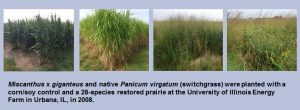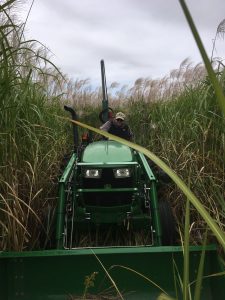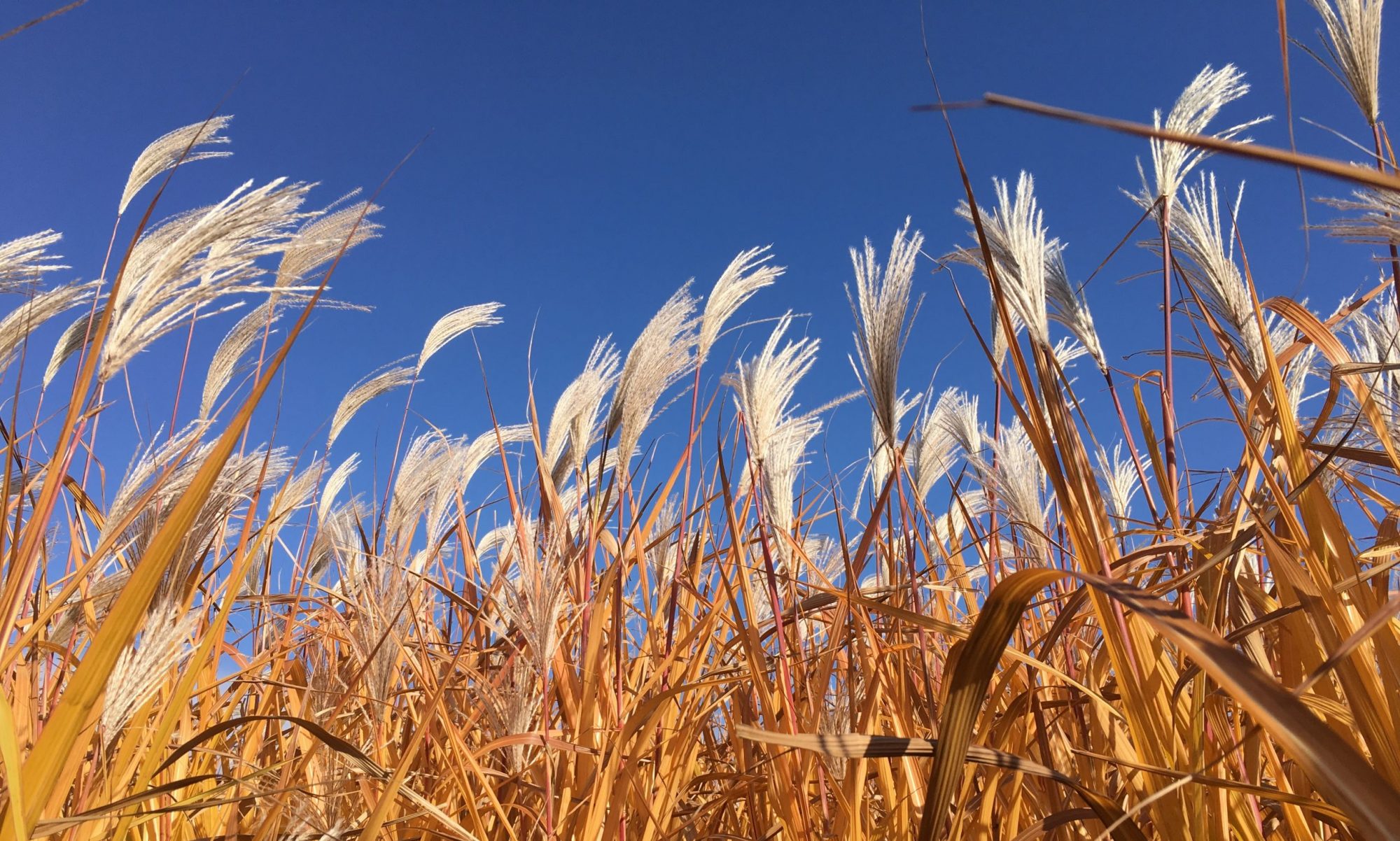
Environmental impact and sustainability of feedstock production
The widespread deployment of biofuel feedstocks is a new era for US agriculture; an era in which feedstock production and ecological impacts are balanced leading to a sustainable system. Because of their high rates of biomass accumulation with minimal nutrient inputs, Miscanthus x giganteus, switchgrass (Panicum virgatum), and restored prairie hold great promise as potential feedstock crops in the US Midwest. Before the self-scouring steel plow, this region was tallgrass prairie with enormous stores of soil organic matter. The conversion of this ecosystem to row crop agriculture dominated by the soybean-corn rotation depleted soil carbon and nitrogen stores, caused extensive soil erosion and contributed to pollution of surface and ground water primarily by nitrate derived from fertilizer. Because of their perennial growth habit, extended growing season, and low demand for nutrients, replacement of a portion of this corn-soybean landscape with feedstock crops has the potential to mitigate many of these environmental impacts.
The objective of the proposed research is to quantify the major pools and fluxes in the biogeochemical cycles of carbon, nitrogen, and water in M. x giganteus, switchgrass, restored prairie, and corn, and to determine how and on what timescale interactions with soil microbial and insect populations affect these biogeochemical cycles. By “closing” the biogeochemical cycles of C, N and water, we develop a mechanistic understanding of how different feedstock crops affect major ecosystem services, such as sequestration of atmospheric carbon, retention of soil nitrogen, reduction of water contamination, and the production of important greenhouse gases including methane and nitrous oxide.
Large replicated plots of M x giganteus, switchgrass, restored prairie (12 species) and continuous corn were established at the UIUC Energy Farm in 2008. Each crop is instrumented with a micrometeorological tower for measuring surface-atmosphere exchange of CO2, water vapor, energy, N2O and methane. Patterned tile drains under each plot allow collection of drainage water from each vegetation type to quantify elemental and nutrient losses to leaching. Tissue specific measurements of material exchange, in some cases using stable isotope fractionation, facilitate closure of the major biogeochemical cycles in each feedstock type. Above- and belowground biometric measurements track changes in the diversity and activity of the soil microbial communities and enable us to determine how soil processes, particularly rates of mineralization, nitrification and denitrification, are regulated. Data is used to inform DAYCENT, a process-based model that will enable us to extrapolate our results regionally.
This research informs the broader biofuel and environmental communities of the potential ecosystem consequences and benefits of the extensive deployment of perennial feedstock crops in land currently supporting row-crop agriculture.

